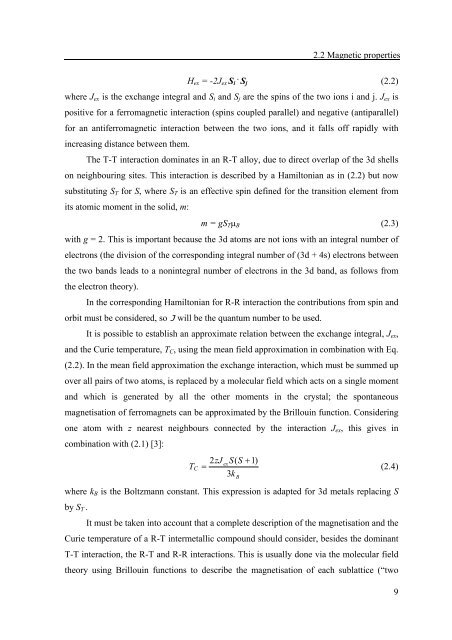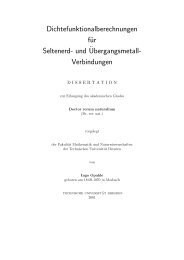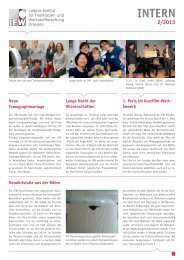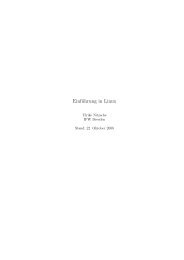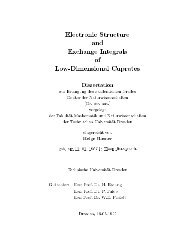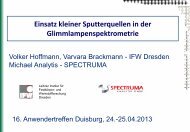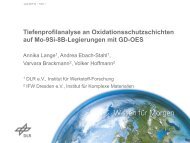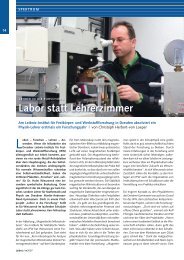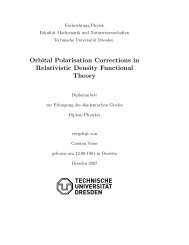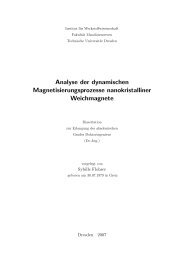ALBERTO BOLLERO REAL
ALBERTO BOLLERO REAL
ALBERTO BOLLERO REAL
You also want an ePaper? Increase the reach of your titles
YUMPU automatically turns print PDFs into web optimized ePapers that Google loves.
2.2 Magnetic properties<br />
H ex = -2J ex S . i S j (2.2)<br />
where J ex is the exchange integral and S i and S j are the spins of the two ions i and j. J ex is<br />
positive for a ferromagnetic interaction (spins coupled parallel) and negative (antiparallel)<br />
for an antiferromagnetic interaction between the two ions, and it falls off rapidly with<br />
increasing distance between them.<br />
The T-T interaction dominates in an R-T alloy, due to direct overlap of the 3d shells<br />
on neighbouring sites. This interaction is described by a Hamiltonian as in (2.2) but now<br />
substituting S T for S, where S T is an effective spin defined for the transition element from<br />
its atomic moment in the solid, m:<br />
m = gS T µ B (2.3)<br />
with g = 2. This is important because the 3d atoms are not ions with an integral number of<br />
electrons (the division of the corresponding integral number of (3d + 4s) electrons between<br />
the two bands leads to a nonintegral number of electrons in the 3d band, as follows from<br />
the electron theory).<br />
In the corresponding Hamiltonian for R-R interaction the contributions from spin and<br />
orbit must be considered, so J will be the quantum number to be used.<br />
It is possible to establish an approximate relation between the exchange integral, J ex ,<br />
and the Curie temperature, T C , using the mean field approximation in combination with Eq.<br />
(2.2). In the mean field approximation the exchange interaction, which must be summed up<br />
over all pairs of two atoms, is replaced by a molecular field which acts on a single moment<br />
and which is generated by all the other moments in the crystal; the spontaneous<br />
magnetisation of ferromagnets can be approximated by the Brillouin function. Considering<br />
one atom with z nearest neighbours connected by the interaction J ex , this gives in<br />
combination with (2.1) [3]:<br />
T C<br />
2 zJ S(<br />
S + 1)<br />
ex<br />
= (2.4)<br />
3k<br />
where k B is the Boltzmann constant. This expression is adapted for 3d metals replacing S<br />
by S T .<br />
It must be taken into account that a complete description of the magnetisation and the<br />
Curie temperature of a R-T intermetallic compound should consider, besides the dominant<br />
T-T interaction, the R-T and R-R interactions. This is usually done via the molecular field<br />
theory using Brillouin functions to describe the magnetisation of each sublattice (“two<br />
9<br />
B


